A few weeks ago, I had the occasion to lead a seed bomb making workshop at the downtown Ypsilanti library, where, by the way, there happens to be a pretty awesome seed library. And, after we’d finished making the seed bombs, and talking about where and how they might be deployed, we watched a documentary called Open Sesame: The Story of Seeds. The film, among other things, was about how critically important is that we don’t just buy one-size-fits-all seeds from big, multi-national corporations, but instead preserve local, historic varieties of plants through the use of independently cultivated seeds. And it got me thinking that, before just going to the hardware store and buying generic kale seeds, as I’d intended to that weekend, I should see if anyone in the area had something better suited to our region, etc. And that’s how I discovered the existence of the Ann Arbor Seed Company… Following is my interview with company founder Eric Kampe.
MARK: How long has the Ann Arbor Seed Company you been in business?
ERIC: I’ve been doing seed work at farm-scale since 2007. We started Ann Arbor Seed Company in the fall of 2011, so that makes this our 4th year in the field, and 3rd of sales.
MARK: How did you first get hooked on seeds?
ERIC: Before starting Ann Arbor Seed Co, I worked on a farm in Colorado called Abbondanza Organic Seeds & Produce. That’s where I fell in love with seed saving. I was in awe of how prolific a seed crop could be and the beauty of vegetables in flower going through a complete life cycle. Most of our effort as a farm crew was centered around the harvest of produce, and it was a special treat when we got a chance to work with seed. I noticed that on a rough day, I would escape from the chaos of the field and clean seed as a way to relax.
MARK: So, on the farm, you’d harvest 95% or so of the produce and then allow the rest to go to seed? It’s probably a naive question, but is that the way most organic farms operate, or do they typically purchase seeds from producers such as yourself? I imagine, after all, that harvesting and cleaning seed is a time and labor intensive process, right?
ERIC: There are still plenty of organic farms that save some of their own seed, but I wouldn’t say that it’s typical. You’re correct that seed saving requires some time and labor. Also the seed crop must be isolated, and rogued of poor performers. And, of course, the time a crop spends in the field is significantly longer. These concerns are often too much for an already busy farmer.
Even so, I argue that it’s easy enough to make one or two crops a priority for seed saving, both for their own use, and to trade with neighbors.
MARK: How many different seeds do you presently carry?
ERIC: 39 varieties this year.
MARK: Are you breeding new varieties, or are you solely dedicated to preserving historic varieties that grew here in our region?
ERIC: I would say our mission is somewhere in-between those two options. I’m not working to breed new varieties, but I am strongly selecting and improving the varieties that I grow. Every season, I apply pressure to improve vigor, flavor, and performance in our soil/climate. Preserving our great wealth of genetic diversity in heirloom crops is very important. As a seed saver, I’m doing my part. Rather than focus on saving as many varieties as possible, though, we’re pouring our energy into improving and adapting our selection of vegetables, leaving the the broader preservation work to great organizations like Seed Savers Exchange.
MARK: Which seed, if you had to choose one, are you the most proud of?
ERIC: Hard to pick one. Last season we had a major breakthrough with the Cherry Belle Radish that I’m excited about trying to repeat. The biennial root vegetables are special for me, I’m thrilled that we have an onion, carrot, and turnip.
MARK: What criteria do you consider when you’re trying to decide whether or not to offer a specific seed?
ERIC: Taste and performance in the farm/garden is the most important. My goal isn’t to save seed from everything. I save seed from what I think are the best varieties for the garden, and I hope others agree.
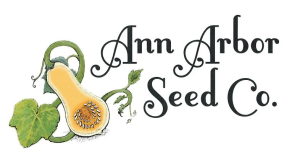 MARK: What does it mean when people say that seeds, such as the ones you offer, are “open pollinated”?
MARK: What does it mean when people say that seeds, such as the ones you offer, are “open pollinated”?
ERIC: A variety that is open pollinated produces seed in the natural way, pollinated by insects or the wind. All plants in the wild are open pollinated. All heirlooms are open pollinated. The heirloom label designates an open pollinated variety that is of a certain age, perhaps over 50 years old, or before the advent of industrial agriculture. All of the seeds that I grow and sell are open pollinated, some are heirloom while some are more modern varieties. If you would like to save your own seed, start with an open pollinated variety.
Hybrid seed is not open pollinated. They are seed produced in a managed environment. Two distinct, inbred varieties are intentionally crossed to encourage uniformity and perhaps other traits. It is undesirable to save seed from a hybrid plants because the line isn’t stable and the offspring will not be true to type, reverting to a mix of traits from the parent lines.
Seed companies can introduce desirable traits such as uniformity, vigor, or disease resistance with hybrids which is great. They can also keep their method of producing a hybrid a secret allowing them to have exclusive sales, which may be good for their bottom line, but discourages the open collaboration necessary for a strong and diverse bank of seeds. Hybrids aren’t inherently bad, per se. And open pollinated seeds aren’t morally superior. These are two different methods of breeding, both of which have their uses.
MARK: Would I be right to assume that you have a position on GMOs?
ERIC: Of course. There are many open questions about the health and environmental safety of genetically modified crops. The issues that I find most important are diversity in our food system and that GMO crops further commit us to large scale industrial monoculture farming.
Most of the GMO crops are targeted to commodity farmers, growers of corn, soy, sugar beets and the like, to be used for animal feeds or processed foods. The home vegetable gardener is unlikely to encounter a GM seed at their local garden/nursery shop.
The genetically modified component of these crops is related to the issues of large acreage growers. For example, genetic modification to tolerate the herbicide glyphosate (which you’ll recognize by its branded name “Roundup”) so that the farmer can spray the field, simply killing everything but their crop.
As you can see, the popularity of GMO crops has to do with very large scale agriculture trying to reduce costs and nothing to do with food quality, flavor, or respect for the environment.
I like to refer people to The Non-GMO project, a useful website for an intro to GMO issues.
MARK: What would you say to those who don’t see a problem with, for lack of a better term, the “Big Seed” industry?
ERIC: The “Big Seed” industry is the reason we have lost so many heirloom varieties. It used to be the case that garden seed came from a large number of small and regional seed companies and also, from seed-saving gardeners and farmers. When our seed comes from a small number of large companies, there is little incentive for diversity. Here’s a graphic about the loss of heirloom varieties.
Also we’ve lost a more subtle diversity within the seeds of our garden vegetables. Large companies grow seeds in ideal parts of the world for each crop. This sounds like a smart move, and when our Michigan weather isn’t behaving (always) I can see the logic. The problem is when you realize that all seed saving is an act of breeding, and growing in ideal conditions weakens the crop to adversity. If all of our seed cabbage is grown in a mild part of the pacific north-west, how will it remain a reliably tough winter crop?
MARK: Have you found yourself getting more politically involved as a result of your work in this area?
ERIC: I certainly find myself talking about seed saving, home gardening, and GMO crops more often. I wish I could say that I’m more politically active on these topics because it’s a very important issue. Running the farm dominates my waking hours and leaves little room to spare.
MARK: Getting back to kale, what can you tell us about the two varieties you carry?
ERIC: I love the heirloom red russian for it’s vigor and hardiness. It’s also one of the first varieties that I ever saved seeds from, back in my “rookie” year (2007). The rainbow lacinato was recommended to me by a dear friend and farmer. I was very pleased to see that it is dark and rich like the classic lacinato, but it grows broader, larger leaves.
MARK: This may come across as a stupid question, but how important to sales are the names you decide to give your seeds? Do you find that you need to rename products multiple times before they resonate with customers? Are there great seeds that just don’t move because of packaging, marketing, etc?
ERIC: The name of the seed, artwork on the seed pack, and all things marketing are very important. Like any product, my seeds have to catch someone’s eye before they will give it a chance in the garden and see how well they grow. Often customers have trouble pronouncing the lettuce variety, Forellenschluss. It’s a beautiful Austrian heirloom with a german name referring to it’s speckled, trout-like patterning. Should I change the name to an english version or stay true to it’s roots? But then again, that name is recognizable to home gardeners familiar with the variety, and has a long history I’m consciously drawing on when I choose to grow it over other lettuces.
MARK: Are there “great white whales” in your line of work… seeds that you’ve heard about, and would love to cultivate and share, but just can’t seem to find?
ERIC: It hasn’t been an issue of “finding” the seed, but managing to successfully or effectively grow and harvest a crop in our climate and using my style of farming. I’m still searching for the right technique needed to grow spinach for seed, in our surprisingly-too-warm climate for this cold-hearty green. I have the opposite problem with basil and eggplant, where the cool nights have made it challenging to get mature seed with a high enough germination rate. Also, some of the large-seeded crops including beans, squash, and peas can be difficult in sell-able quantity on my small-scale farm. Each year I learn a few new tricks, and realize how much more there is to learn.
MARK: I was reading not too long about about the number of small seed companies that have either been acquired or folded over the past several decades. Hopefully culture is changing so that more people see a value in what you and others are doing in this area, and choose to support you with their seed purchases. Are you seeing that?
ERIC: I’m seeing a lot of wonderful support from our community. People are excited to see a local seed company. There is also a lot of new small seed companies, sprouting up all over the country. Check out our other local seed growers, Nature and Nurture Seed.
This trend ties into the local/organic food movement as a whole. As people recognize that good food comes from local farms and gardens, the need for local seed saving becomes more obvious.
MARK: What channels do you sell through?
ERIC: We sell at the Ann Arbor Farmer’s market during the spring planting season (April-June), at retailers from Detroit to Grand Rapids, and through our online shop. Check the website for the full list.
MARK: And, lastly, what does the future hold for the Ann Arbor Seed Company? Should we expect anything different from you next season?
ERIC: I’m always working to grow more, save seed better, and to care for the soil more effectively. We are working with chef Frank Fejeran’s new restaurant Ricewood to preserve an heirloom hot pepper. This year’s big project is growing spinach in many different ways to see what we can learn. We’re adding more herbs and flowers, and continuing to fill out our collection of garden vegetables. We’re collaborating with local farms — Brines, Green Things, and Seeley — for more ornamental varieties and a new way to save kale. This year will be full of mechanical projects to improve the way we winnow and thresh seed, and in the coming years we’ll experiment with migrating to a permanent bed field management to help with drainage and soil preservation. That’s just off the top of my head. There is always more to do.

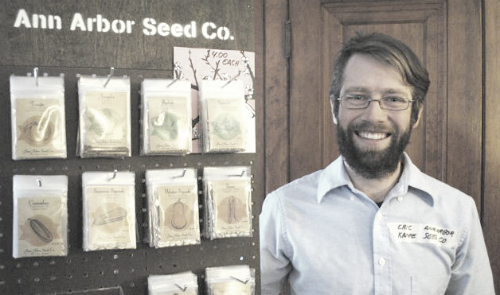
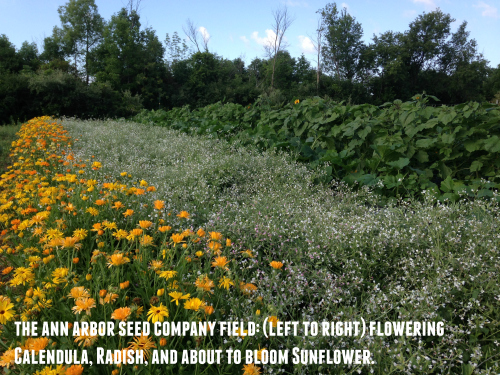
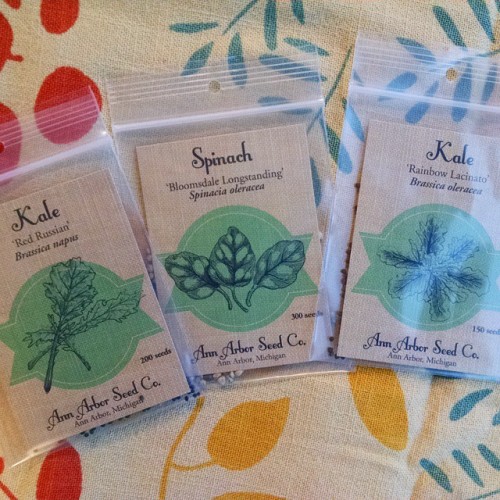
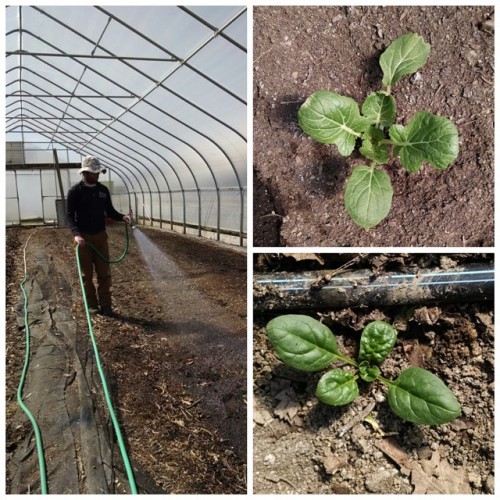











3 Comments
If I had to make a list of the 10 most incredible things on earth, seeds would be on there. They’re magical little things.
If you want to save seed at home, there are quite a few resources available on-line.
Here are details on how to harvest and save every variety of vegetable seed:
http://www.seedsavers.org/Education/Seed-Saving-Instructions/
What’s the one vegetable that should never be grown in Michigan?